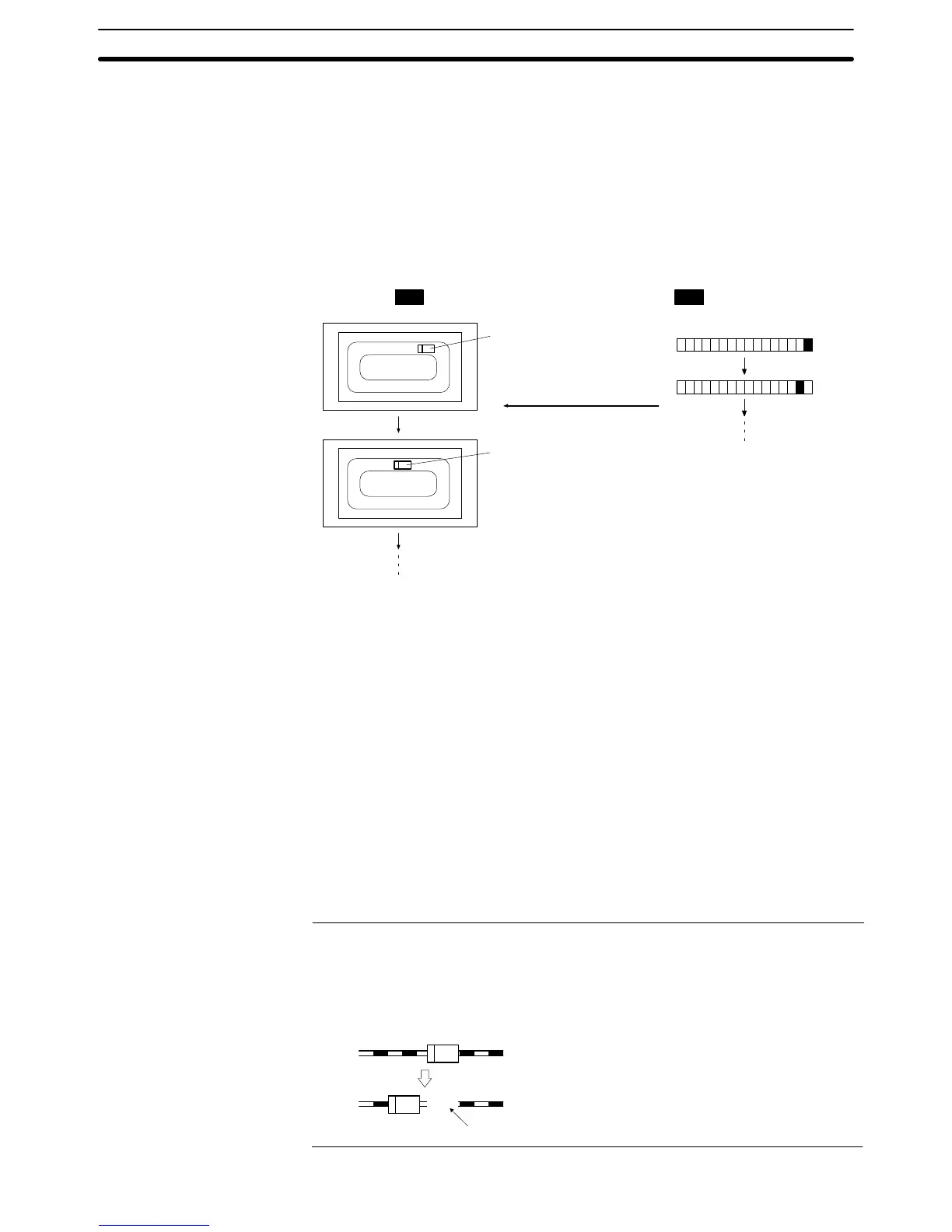The rail is cleared.
5-1SectionExamples of Actual Applications of Direct Access
404
• Guide character type: ON/OFF switching
• OFF guide characters: TRANSPORTING
• ON guide characters: TRANSPORT OVER
• PC address: Bit address of the bit used to change between the
character strings
PC bits 0 to 15 come ON according to the position of an automatic guided ve-
hicle, and the position of the vehicle is shown on the screen.
15 0
Automatic guided vehicle
at bit 0 position
Bits
Automatic guided vehicle
at bit 1 position
PCPT
1, 2, 3... 1. Create figures depicting the automatic guided vehicle with library data (fixed
display graphics) or image data (composed of dots). If there is a figure with a
different orientation, create it separately.
2. Register image/library lamp set as shown below for the position correspond-
ing to bit 0 on the screen.
• OFF State, Code:
Check mark not set
• ON State, Code:
Check mark set, code for the library data for the automatic guided vehicle
created in (1) (shape corresponding to the position)
• PC Address:
Bit number of bit 0 indicating the automatic guided vehicle’s position
3. Register image/library lamps set for bits 1 to 15 in the same way as in (2).
Reference: With PT, once an element has been drawn, it is not redrawn unless the display
contents change (this applies even with overlapping screens). Consequently, if a
rail is drawn as a fixed display element underneath the automatic guided vehicle,
when the automatic guided vehicle moves, the rail underneath the position
where the automatic guided vehicle was originally placed, cleared together as
the vehicle moves. Bear this in mind when creating the screen data.
Example:
